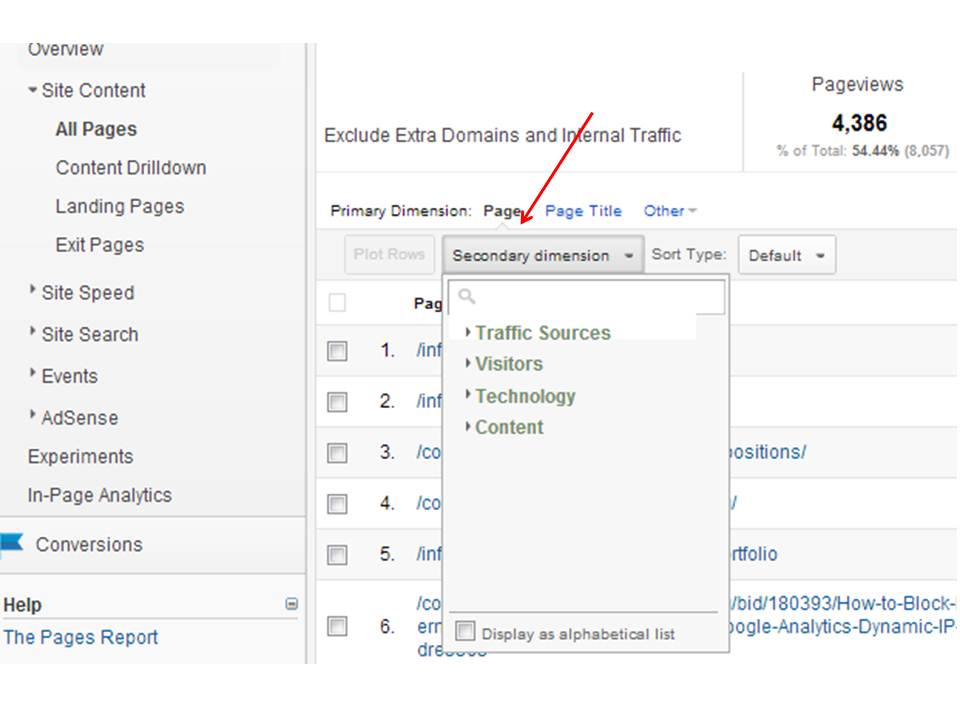Recognizing the Idea of a 'Secondary Dimension' in Google Analytics: What Does It Mean?
Recognizing the Idea of a 'Secondary Dimension' in Google Analytics: What Does It Mean?
Blog Article
Decoding the Relevance of Second Dimension in Google Analytics: All About Its Significance and Influence
In the world of electronic analytics, the use of secondary measurements within Google Analytics serves as a pivotal device for discerning deeper layers of data insights. The relevance of additional dimensions exists in their capability to offer a nuanced sight of customer habits and communication with a site or system.
Recognizing Secondary Dimensions in Google Analytics
The understanding of second dimensions in Google Analytics is crucial for obtaining much deeper insights right into customer actions and internet site efficiency. While primary measurements supply basic information factors such as website traffic sources and page views, second measurements permit for a more nuanced analysis by giving extra context to these primary metrics. By incorporating second measurements, users can segment and filter their information to reveal patterns and patterns that may not be promptly noticeable.

Unveiling the Conveniences of Second Dimensions
Structure upon the foundational understanding of additional measurements in Google Analytics, checking out the benefits they use discloses indispensable understandings for enhancing information evaluation and decision-making. By integrating second measurements, customers can dig deeper into their information, gaining a much more comprehensive sight of individual habits, material performance, and other essential metrics. One of the key benefits is the capacity to sector data, enabling a more granular evaluation of numerous dimensions such as website traffic sources, gadgets, demographics, and a lot more. This division makes it possible for users to recognize patterns, fads, and correlations that might not appear when checking out information in aggregate.
Furthermore, additional measurements offer context to key information, offering extra layers of information that can assist in comprehending individual communications and preferences. This boosted understanding can direct critical decision-making, causing more targeted advertising projects, internet site optimizations, and general enhanced performance. Fundamentally, secondary measurements act as a powerful tool for opening deeper understandings and making the most of the energy of Google Analytics for companies and web site owners.
Leveraging Second Dimensions for Boosted Insights
By utilizing the power of second dimensions in Google Analytics, services can uncover deeper understandings that drive informed calculated and decision-making optimization efforts. Leveraging additional measurements enables businesses to delve past surface-level data and acquire a much more comprehensive understanding of user habits, audience demographics, website traffic resources, and website efficiency. As an example, by incorporating key measurements like web traffic sources with secondary measurements such as geographic area or device group, organizations can identify which gadgets or areas are driving the most useful traffic to their website.
In addition, secondary dimensions make it possible for services to section and evaluate information a lot more successfully, helping them determine patterns, patterns, and possibilities that may have otherwise gone undetected. By making use of additional measurements, services can tailor their advertising techniques, material, and customer experience to better satisfy the requirements and choices of their target audience. Fundamentally, leveraging second measurements in Google Analytics empowers companies to make data-driven decisions that lead to improved performance, increased ROI, and sustainable development.

Impact of Secondary Dimensions on Information Analysis
Enhancing information analysis through the application of secondary dimensions in Google Analytics offers organizations with a much deeper understanding of their on-line performance metrics. By integrating second measurements, such as time of day, geographic area, or device category, services can discover valuable insights that might have been forgotten with key measurements alone. This enhanced level of check this granularity enables for more precise segmentation of data, making it possible for businesses to identify patterns, fads, and correlations that can drive critical decision-making.

Taking Full Advantage Of Potential: Additional Capacities Strategies
One essential strategy is to integrate secondary dimensions with main measurements to get an extensive sight of individual interactions. Coupling the key dimension of 'source/medium' with additional dimensions like 'touchdown web page' or 'tool category' can reveal which channels are driving traffic to details web pages or just how customer actions differs throughout tools.
In addition, using additional dimensions to segment data based upon individual demographics, behavior, or innovation can help services tailor their marketing initiatives to certain audience sections. This targeted method can result in boosted conversion prices, improved individual experiences, and inevitably, increased ROI. By optimizing the potential of second dimensions in Google Analytics, businesses can make informed decisions, enhance their online existence, and drive sustainable development.
Verdict
To conclude, second dimensions in Google Analytics play an important role in offering much deeper understandings and enhancing data evaluation. By using second measurements efficiently, businesses can get a more comprehensive understanding of customer behavior and site performance. Integrating secondary dimensions right into information analysis strategies can cause even more informed decision-making and enhanced overall efficiency. It is necessary for companies to take advantage of the power of additional dimensions to maximize their possible and achieve higher success in their on-line ventures (what is a “secondary original site dimension” in google analytics?).
While primary dimensions supply basic information points such as web traffic sources and page views, additional dimensions permit for an extra nuanced analysis by giving additional context to these main metrics. you can try these out By combining key dimensions like website traffic sources with additional measurements such as geographical location or tool group, businesses can identify which devices or areas are driving the most useful traffic to their website.
By including secondary dimensions, such as time of day, geographic area, or device classification, services can uncover beneficial understandings that may have been neglected with key measurements alone. One vital method is to integrate additional dimensions with main dimensions to get a comprehensive sight of individual communications. Pairing the main dimension of 'source/medium' with secondary dimensions like 'landing page' or 'device classification' can expose which networks are driving traffic to certain web pages or just how user actions differs across tools.
Report this page